



















Join the celebration of Women’s History Month






Millersburg
Ferry operating since 1817
Appreciate the women in your life
Two historic moments for women




From 1776 until 1920, women could not vote in the United States of America. Black men were able to vote in 1870, but women didn’t get the vote until Aug. 18, 1920. Harriet Tubman, who led more than 70 slaves to freedom before the Civil War, died in 1913, never having been able to vote.
Thirty years later, in the 1950s, in our Valley, a young woman who graduated from high school could vote when she was 21, but her working opportunities after graduation were limited. If she was skilled at taking shorthand, she might have taken a job as a secretary. Or, she might have joined other women who worked at one of the local sewing factories. Retail or grocery store clerk was also a job choice and, if her family owned a business, she might join the family business. If her goal was to go to college, she was — most likely — enrolled at a nursing school or at a teacher’s college.
Today, women who graduate from high school have a myriad of opportunities, but it hasn’t always been easy and there are still challenges remaining.
In 1972, the Equal Rights Amendment was championed by President Richard Nixon. To add an amendment to the Constitution, 38 of the 50 states would have to ratify it. See page 18 to review the status of this effort.
Eight years later, in 1980, President Jimmy Carter declared the first Women’s History Week. The text of President Carter’s remarks — in the midst of the efforts to ratify the amendment — is on page 19.
Beginning in 1987, Congress passed annual resolutions celebrating March as Women’s History Month and, since 1995, every president has proclaimed March to be Women’s History Month.
The theme of this years celebration is “Celebrating Women Who Tell Our Stories.”
This issue of Inside PA (IPA) recognizes and celebrates three women who write for IPA and The Daily Item: Cindy Herman, Lisa Leighton, and Mary Bernath. In these pages, you’ll read the stories they tell about four remarkable Pennsylvania women who advanced the rights and opportunities of women during the past century.
Part of a quote was missing from Drew Sassaman’s story as part of our “30 Under 30” feature in the Winter edition of Inside PA. We apologize for the error. The full story and photo can be found on Page 4

INDEPENDENTLIVING AT THEMEADOWS


“Movingto eMeadows at MariaJosephwas theright choice for menearly veyearsago. equality of life is enhanced bythe strong senseofcommunity :neighbors helpingneighbors, friendly sta providingenter tainment,exerciseclasses,walking trips, andcaring supportwhenhelpisneeded.” ~Ruth
PERSONALCARE AT MARIAJOSEPH MANOR


“I love alltheactivities at MariaJosephManor!!! Especiallythe ice creamtruck!!” ~Mar yAnne
MEMORYCAREAT NAZARETHMEMORY CENTER


“Shortly a er my husband andI moved intothe Meadows,I realized my husband needed care at Nazareth Memory Center.He hasadaptedsowelland even refers to Nazareth as “home.”I can’t thank everyone enough forallowingustobeapar tofwhatwecall “family.” ~Becky andBirdie


“ esta at Emmanuel Center took such good careof me.One day twogirls came in to helpmeget readyandtheyweresinging asong. Soon,wereall laughingandsinging together.I am so thankful for allthe therapy department didforme.SogladImadethe choice to come to Emmanuel Center.” ~Jessie


Before he graduated from Danville High School, Drew Sassaman, 22, of Villager Realty in Danville, shadowed a family friend who was a real estate investor and Sassaman knew that was exactly what he wanted to do. He waived admission to Penn State and moved to South Carolina for a year to earn his realtor license.
“I wanted to get started early in my career and keep pushing forward,” he said.
Moving south was a turning point — Drew realized his small hometown was a gift. He moved back a year later and joined Villager because of its “reputation, mentorship opportunities and growth potential.”
Associate Broker Stephanie DiDomenico said, “Drew has crafted an incredible following on social media with tens of thousands of viewers. He and I attended a leading real estate conference in Las Vegas last year and he was recognized in the elevator by agents from around the country.”
Drew has also earned 2022 Rookie of the Year, Top Producer at Villager Realty, and, in his second year, he is in the Top 10% of agents in the five-county region.
Drew said his passion for real estate is fueled by his goal of helping people achieve their financial dreams through home ownership and real estate investment.

















Dear Ms. Knouse,
I look forward to reading Inside PA Magazine and especially enjoyed the 30 Under 30 segment in your most recent issue. It’s encouraging and inspiring to see so many young adults excelling in such a variety of areas. Most impressive is their dedication to improving their skills along with supporting their local communities. We’re so fortunate to have such talented and caring individuals in central PA!
Holly Morgan MifflinburgDear Editor,


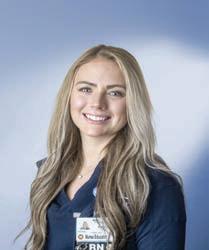
Dear Ms. Knouse,
I recently had the opportunity to read the three latest issues of Inside PA (Fall 2023, Holiday 2023, and Winter 2024).

All three issues were delightful. Although I’m not a subscriber to The Daily Item, I may just have to start again. I used to subscribe, but canceled my subscription when the paper posted my husband’s annual salary.
What I loved about all three issues was how much new information I gleaned about things happening and things to do in the Valley. The 30 under 30 article in the latest issue was fascinating. So many young people choosing to stay in the valley and pursue unique and meaningful careers. I’m impressed that they are all so young, yet so mature.


The “Paddling the Susquehanna” article by Lisa Z. Leighton also sparked my interest. I’ve seen that statue from the road






Your 30 under 30 section did in fact restore my faith in the generations to come. Well done.
Denny Campbell Shamokin Damhundreds of times while driving from Lewisburg to points south, but never knew of anyone who took a canoe on such a long trip to get up close!

Inside PA offers unique and interesting stories. Thank you for all that you do to make that possible.
My only negative is that the magazine seems to need at least one more set of eyes before it goes to print. There are mistakes that haven’t been caught before publication. As a writer, I know how difficult (impossible) it is to edit anything perfectly.
Meanwhile, keep up the good work. Looking forward to the next issue.
Sincerely,



 Patricia Parker Lewisburg
Patricia Parker Lewisburg





















March begins in winter and ends in spring, which is why you hear folks say, “March comes in like a Lion and goes out like a Lamb.” In 2024, spring arrives on March 19. On that date, the daffodils may be poking their heads through the snow and, since there will be just 12 days until Easter, let’s hope the snow melts in time for the Valley’s egg hunts.









College sports fans anxiously anticipate the arrival of March each year. That’s because the month marks the return of March Madness, college basketball tradition that annually draws millions of fans to watch and/or attend games in the weeks-long, single-elimination NCAA Tournament that culminates with the national championship game. The origins of the phrase “March Madness” are not precisely known, though many historians trace the phrase to high school basketball in Indiana in the 1930s. Legendary broadcaster Brent Musburger is credited with associating the term with the NCAA Tournament in the 1980s.

TRADITIONALIRISHMUSIC Dervish
Friday,March22
AMERICANA
BillandtheBelles
Thursday,April4
CLASSICAL
JonathanSwensen,cello andAdamGolka,piano
Allperformancesat7:30p.m. unlessnotedotherwise.

Sunday,April7,2p.m.
MILITARYBAND
TheJazzAmbassadorsof theU.S.ArmyFieldBand
Friday,April12 pictured,right
WORLDMUSICFROM VERACRUZ,MEXICO
CanaDulceCanaBrava
Thursday,April18 pictured,top

Tickets: Bucknell.edu/BoxOffice 570-577-1000

April is a short month with 30 days while May is a long month with 31 days. April brings Tax Day while early May brings Mother’s Day.
Everyone’s spirits are lifted when — in April and May — the gorgeous variety of spring flowers is on display and the trees on the mountains around us turn green.











































obert Inglis is the award-winning photographer for The Daily Item. In 2023, Inglis’s 20-year Retrospective of Photographic Journalism was exhibited at the Degenstein Library in Sunbury.













The Millersburg Ferry crosses the Susquehanna River from the east side at Millersburg to Crow’s Landing, a few miles below Liverpool on the west side of the river. It has carried people and vehicles from one side to the other since 1817.
From Millersburg, the nearest bridge to cross the river is north of the Ferry in Sunbury, which is 17 miles away or south to Duncannon, 18 miles away.
Daniel Miller founded the city of Millersburg in 1807. In the 19th century, ferry boats were commonplace along the Susquehanna from the New York border to the Maryland
border — some were commercial while others were privately owned. At the time of the city’s establishment, Miller retained the rights to have a ferry within the city.
While records show the ferry first ran in 1817, there is evidence to suggest that it could have existed as early as 1750. Dr. David Russell, president of the Millersburg Ferry Organization, said, “There were over 100 ferries (along the Susquehanna) that crossed the river at one point in time.” Ferryboats were essential in early transportation, and Russell added, “This is the last ferry in existence crossing the Susquehanna River.”
Tom Mallonee, who has captained a boat for 25 years, says location plays a big role in the ferry’s success. U.S. Routes 25 and 109 join Route 147 in Millersburg, coupled with the landing dock on the other side of the river at Crow’s Landing, which sits in the Ferryboat Campsites along busy U.S. Route 15.
The ferry is the only means of crossing the river between Sunbury and Duncannon, a distance of about 35 miles.
In addition to transporting cars and people, the boat can be chartered. This provides the public with the opportunity to host an event while on the water. In the past, the ferry has seen numerous weddings, celebrations and meaningful occurrences. They have also hosted several events with local wineries and breweries.
In 2006, the Millersburg Ferry was nominated to the National Registry of Historical Sites. Later that year, the Ferry was recognized by the National Park Service as having a
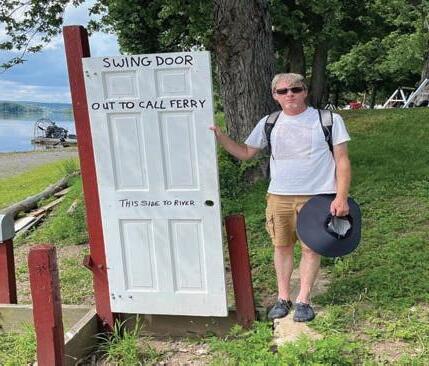

significant impact on the state and nation and was awarded the prestigious designation.
The ferry has been a staple for many generations of Millersburg residents. With two boats, the Roaring Bull and the Falcon, remaining as they were when built, Mallonee said. “It gives a glimpse into the history and into simple and practical things.”
Residing in Millersburg for his entire life, 79-year-old John Strohecker has a multitude of fond memories involving the ferry. Strohecker said he has ridden it thousands of times over the years. For many of those times, he was accompanied by his siblings. He said, “My mom would give us a quarter, and it was a nickel to ride over and a nickel to ride back.”
Strohecker says he would take swimming lessons at Crow’s Landing as a child because the water was much cleaner on that side of the river. This was due in part to the once-great coal mining industry that the Millersburg side saw in the past.
Mallonee is one of four operating captains for the ferry and there is one currently in training. At one time, the ferry operated seven days a week. With the shrinking number of captains, they are finding it difficult to operate multiple days during the week. Training is free as the group provides it. The primary commitment to become a captain is to serve 100 hours as a first mate, or captain’s helper.
Mallonee says they would need at least two to three more captains to be able to operate seven days a week.
Most years, the ferry is open annually from Memorial Day



weekend to Labor Day weekend, barring any unforeseen circumstances. The ferry runs until 5 p.m. when it is open.
In the 1990s, the ferry became an official nonprofit organization. In recent years, they have found it to be increasingly difficult to continue providing this unique service. With the rising costs of repairs and insurance, they are constantly searching for volunteers.
When putting the boats in and out of the water, they credit Marvin E. Klinger Inc. for bringing the firm’s heavy-duty wrecker to lift the boats. However, even with their help, it is still a laborious task that requires many hands to accomplish.
If you’re interested in volunteering, the Millersburg Ferry’s Facebook page provides the information you need. The organization welcomes all and is ever grateful for help.
The ferry is also involved with community events. The most well-known is the Millersburg’s Fourth of July celebration. Mid-Penn Bank sponsors the fireworks display that is launched from one of the boats from the middle of the river.
While the ferry is no longer a vitally important means of transportation for folks who live between Sunbury and Duncannon, it is a trip to be enjoyed and appreciated.


















In 2024, 80 percent of people in the United States think men and women are guaranteed equal rights in the original U.S. Constitution. They’re wrong. However, one ammendment would have ensured the protection of all people under the Constitution, regardless of sex or gender.

Richard Nixon was president when the amendment was passed by Congress in 1972. States were given seven years to ratify it so it could be added as an amendment to the Constitution. The deadline was later extended to 1982. By that year, 35 of the 38 states needed for passage had ratified it, but it was not enough. The amendment failed.
Pennsylvania ratified the amendment on Sept. 26, 1972.
The Equal Rights Amendment of 1972 that failed to be ratified
Section 1. Equality of rights under the law shall not be denied or abridged by the United States or by any state on account of sex.
Section 2. The Congress shall have the power to enforce, by appropriate legislation, the provisions of this article.
Section 3. This amendment shall take effect two years after the date of ratification.
SOURCE: Equalitynow.org
Forty-three years ago, President Jimmy Carter delivered the first proclamation recognizing and celebrating women’s historic achievements. He designated March 2-8, 1980, as National Women’s History Week. Here are his words:


“From the first settlers who came to our shores, from the first American Indian families who befriended them, men and women have worked together to build this nation. Too often the women were unsung and sometimes their contributions went unnoticed. But the achievements, leadership, courage, strength and love of the women who built America was as vital as that of the men whose names we know so well.

As Dr. Gerda Lerner has noted, “Women’s History is Women’s Right. — It is an essential and indispensable heritage from which we can draw pride, comfort, courage, and long-range vision.”
I ask my fellow Americans to recognize this heritage with appropriate activities during National Women’s History Week, March 2-8, 1980.
I urge libraries, schools, and community organizations to focus their observances on the leaders who struggled for equality — Susan B. Anthony, Sojourner Truth, Lucy Stone, Lucretia Mott, Elizabeth Cady Stanton, Harriet Tubman, and Alice Paul. Understanding the true history of our country will help us to comprehend the need for full equality under the law for all our people.

This goal can be achieved by ratifying the 27th Amendment to the United States Constitution, which states that “Equality of Rights under the Law shall not be denied or abridged by the United States or by any state on account of sex.”
SOURCE: Nationalwomensalliance.org
 President Jimmy Carter
President Jimmy Carter

GREEK PLAYWRIGHT AESCHYLUS COINED THE TERM PHILANTHROPY IN THE 5TH CENTURY BCE. IT MEANT “LOVE OF HUMANITY.” TODAY, PHILANTHROPY MEANS GENEROSITY IN ALL ITS FORMS AND IS OFTEN DEFINED AS GIVING GIFTS OF “TIME, TALENT AND TREASURE” TO HELP MAKE LIFE BETTER FOR OTHER PEOPLE.
Source: fidelitycharitable.org
Abigail Geisinger gave Dr. Harold Foss — the chief of staff she hired to fulfil her vision of a hospital in Danville — a general directive that expressed her lofty endeavor: "Make my hospital right. Make it the best."
When they met in 1913, Foss’s first impression of “a small, white-haired woman who wore gold rimmed spectacles” soon matured into respect for this “extraordinary woman … with a phenomenally alert and active mind.” She was 86, and he, a young doctor in training, was 30.
“She always knew what she wanted, insisted on getting
it, and usually succeeded,” he wrote in his history of the hospital published by Geisinger in 1961.
Abigail Ann Cornelison’s early life was not easy. Born in Catawissa in 1827 on her grandparents’ farm, she lost her mother when she was just three months old, and she was taken to Ohio by her mother’s brother and raised as a Quaker. Later she returned to her father, Isaac, a wagon maker in Danville. The Cornelison family were long-time Danville residents, her great-grandfather Joseph having opened the first blacksmith shop in Danville. At 16, her
father died, and at 23, she married her first cousin, Jacob Cornelison, with whom she ran the White Swan Hotel in Danville for 13 years. Jacob was drafted into the Union Army and died of dysentery on his way home from the Civil War.
On her own again and living on a widow’s pension, Abigail met and married George F. Geisinger in 1866. He had come to Danville in 1855 to work as a bookkeeper with Grove Brothers of Danville, operators of the Montour Iron Works. In 1868 he became a joint owner of the company, renamed the Pennsylvania Iron Company, where he continued as head bookkeeper until his semiretirement in 1880. At his death in 1883, Abigail inherited his investments and his lucrative stock in the Kingston Coal Company, which progressively increased in value in the years that followed.
She had no children and lived alone in a house on Center Street in Danville, now the Abigail House B&B. She was careful with her wealth and did her own work, with very little domestic help. Her one extravagance was the purchase of a Hupmobile in 1913, one of the first cars in Danville. “The hospital was an indirect result of that machine,” writes Harold Foss. With her car and driver, Mrs. Geisinger was “frequently called upon to transfer sick or injured folk to Bloomsburg,” site of the nearest hospital. As the need for her ambulance services grew, she decided the best solution would be to build a hospital in Danville.
At first, she envisioned a “cottage hospital” just for the town itself, but Dr. Foss and Dr. J. Montgomery Baldy, a Danville native and prominent Philadelphia OB/GYN doctor, convinced her to think bigger, and in a few years after opening, according to Foss’s history, “over 2,000 patients, from about 150 towns other than Danville, were being admitted annually.”


Construction started in 1913. Total cost, including land and equipment, was $387,000, according to Donald Housley’s book about the hospital. Abigail furnished it herself, traveling to Wanamaker’s in Philadelphia to pick out the oak bureaus, brass beds, and “Persian” rugs for the rooms, according to Brit Roth, retired Director of Academic Information at Geisinger. Foss reports in his book that “eventually it required approximately nine freight cars to transport the purchases to Danville.” Roth added that Mrs. Geisinger also hired landscapers to create an elaborate arboretum all around the hospital.
Besides initial expenses, as the Daily Item reported in 1919, she arranged for the building of a large addition to contain private rooms, at a cost of $200,000. The paper also reports her donating more than $50,000 a year for the upkeep of the hospital and arranging “that such a sum will yearly be available so long as the institution stands.”
Mrs. Geisinger was most definitely a hands-on donor. Foss reports being required to “spend part of each evening with Mrs. Geisinger. Any dereliction in this regard resulted in a scolding,” and so for five years he spent at least an hour each day “talking about the hospital, the

town and local events, or merely gossiping.” Mrs. Geisinger had two private rooms in the hospital, above the main entrance, where she often spent time.
According to the Geisinger Archives, Robert Froberger, the first Assistant Superintendent/Radiologist, recalled that Mrs. Geisinger “customarily visited the hospital grounds twice a day, mornings in her carriage and afternoons in her automobile.” Foss reported her “frequently making rounds with me, going from bed to bed talking with and encouraging the patients in whose progress she took a lively and sympathetic interest.”
Almost daily in summer, according to Foss, “she would bring flowers, ferns, baskets of grapes, etc. to the hospital for patients or members of the staff” and, in summer, she would pin a rose or other flower in the buttonhole of any doctor she met. Most plants were grown in her own greenhouse. Mrs. Geisinger died in 1921 at the hospital, at the age of 94.
Devoted as she was to her one big project, the George F. Geisinger Memorial Hospital, she was very aware of other needs in the town of Danville. For example, Mrs. Geisinger set up an endowment fund to use for operating expenses at the YMCA . In 1912, according to the Danville Morning

News, “she further endowed the building with $32,000 when it was enlarged and the present swimming pool and gymnasium constructed and the bowling alleys installed.”
She was a generous contributor to her church, the Mahoning Presbyterian Church, and had a special interest in caring for indigent women. To that end, she made provisions to found the Abigail A. Geisinger Home for Friendless Women, and during her lifetime she received letters from indigent, elderly women seeking placement in the home. After her death, a farm was purchased in Mausdale for that purpose, but the project floundered for lack of sufficient funds to sustain it, and so in 1933, the money she had committed to it was repurposed to fund medical care at the hospital for indigent local women.
Abigail had no direct descendants, but when a group of her nieces, who received small inheritances, challenged her will in 1923, her wide generosity was made public. For those close to her, like her coachman, she was very generous with money and a house for life. She also gave substantial gifts to the Presbyterian Church, to the Indian Training School at Carlisle, and to Lincoln University in Chester County, the second historically Black college founded in the U.S. But the bulk of her money went to her two main charities, the Geisinger Hospital and the Home for Aged and “Friendless” Women.
• Inside PA would like to thank Kathy Heilman, of The Geisinger Archive, and Lynn Reichen of the Montour County History Society for their help in researching this article.

M-F7AM-5PM
SAT8AM-12PM
SUNCLOSED

SELINSGROVE
ThePlazaShoppingCenter
Routes11/15 •570-374-2865
Mon.-Thurs. 10-7, Fri.-Sat. 10-8, ClosedSunday
BLOOMSBURG
TheBloomsburg/BerwickHwy. 570-784-2234
Mon., Tues.,Thurs. 10-7
Fri. -Sat. 10-8 |Closed Weds. &Sun. www.plazahouse.com
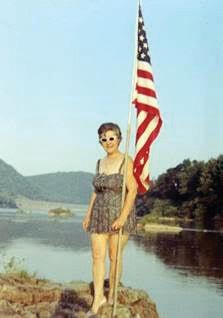
In the 1940s, a woman wore hats and gloves, refrained from boisterous behavior and bowed to her husband’s authority. Even if he abused her — and their children — she did not divorce him. And she certainly wasn’t expected to become a railroad welder.
However, Bertha “Birddie” Mae Borhman Fisher had had enough. She took her three children and left.
A 1942 article in “The Evening News, Harrisburg, Penna.” listed Borhman as the “First woman from Juniata County to complete a welding course at the Juniata Joint High School.” In 1945, Borhman’s Pennsylvania Railroad Pass permitted her — as an employee — to reserve space on specific trains. It identified her as a machinist-welder in Philadelphia’s “Middle Division.”
“This was in the 40s and pretty unheard of at the time,” said Amber Hawke, Borhman’s great-granddaughter. “She accepted a job with the Pennsylvania Railroad ‘when the men went off to war.’”

It’s a part of the family lore that Borhman was the first woman hired by the Pennsylvania Railroad as a welder. The family has been told there is a plaque in Harrisburg with her name on it, but has had no luck locating it. However, Hawke said, “Even if she wasn’t the first, she was definitely one of the first.”
During WWII, according to thefreelibrary.com, Pennsylvania Railroad managers became “desperate” enough to hire female employees, but their roles were limited. Still, “In a few instances, women even made incursions into such bastions of masculine labor as boilermakers, electricians, painters, welders, and machinists.”
As a divorced, working woman, Borhman saved enough money to put a down payment on a home along the Juniata River, in Newport. However, her purchase would not have been possible without a mortgage and, “In 1949, she was also the first woman to be approved for a mortgage by the 1st National Bank of Newport,” said Kii Fisher, Borhman’s grandson.
To travel to work in Harrisburg, Borhman rode on the back of a milk truck to get to a train that took her to the Enola Yards each day. On the train, she met Robert “Jack” Sarver, a machinist who had been rejected for military service because of his flat feet. He also worked in Harrisburg.
“They said his job with the railroad as a mechanic was something that was beneficial to the war effort back home,” Fisher said.
Sarver raced to the train station every morning so he could sit with Borhman.
“They used to say the ‘fastest thing on four wheels’ was Jack Sarver heading for the rail station in Newport to catch the train to ride with Birddie the rest of the way down to the Harrisburg/Marysville area,” Fisher said.
Apparently, according to Hawke, Borhman had two suitors proposing marriage and, obviously, she had to make a choice.
“My Nanna said she’d made such a terrible decision the first time she got married, so she left it up to the children, who picked my Pappy Jack,” Hawke said. “He was tall and lanky and strong. He loved her so much.”
Bertha and Jack married in 1950 and spent 46 happy years together.
Hawke and her father laughed and blinked back tears as they told memorable stories about Borhman, who died in 2002.
“Every summer before the Fourth of July she would swim out to the little rock island near the house and plant an American flag,” Hawke said.
She was “always dressed to the nines,” Hawke said, even wearing lipstick in a photo of her with a deer she shot. And, with fondness, Hawke explained how her Nanna hosted tea parties for her and the neighborhood girls, complete with fancy dresses and petit fours. Her Nanna also taught Hawke how to sew and always encouraged her painting.
“She was always saying, ‘Here, draw this,’” Hawke said. “She always had a fresh pack of markers waiting for me. She took a few painting lessons and did many paintings. She even – in her 60s – took me climbing all over this rock pit for interesting rocks to paint on. What grandparent at that age


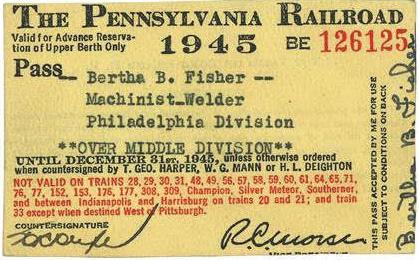

does that? She was always so proud of me when I won art contests. She is a massive reason I am a graphic designer.”
Fisher said Borhman rode horses until she was 62, bear hunted until she was 79, loved taking photos and would stop for any yard sale.
Laughing, Hawke recalled seeing Borhman running in her underwear down the driveway of their beloved cabin in Westport to yell at ATV riders who were “‘tearin’ up her roads.’ She was cussin’ up a storm, and my pap would just go, ‘God, I love that woman.’”
“I think, if you go back to what she had gone through as a young wife and mother — that shaped her later in life to where she was no-nonsense,” Fisher said. “You could almost say she was one of the first ‘I Am Woman, Hear Me Roar’ before the song ever came about.”
Hawke never asked her great-grandmother how she felt about being a trailblazer. She said Bertha always focused on others, not on herself. Hawke also said a relative told her Bertha was “pipin’ mad” when she had to give up her job when the men came back from the war.
“She always supported and encouraged me in everything, even when I didn’t believe in myself,” Hawke said. “She was convinced I would be Miss America. Con-vinced. I laugh about it now, but I know she meant it in her heart.”
Fisher added that Borhman helped raise him, teaching him to love horses and to be a good person.
“She constantly built me up. She was very much: there isn’t anything that you can’t do. If you want to be president of the United States, you can do it,” Fisher said. “She always told you she loved you.”
and was proudly displaying it. Notice how well groomed she is to show off her trophy — lipstick recently refreshed.







On a recent February night, when Ann Keeler Evans drove home to Lewisburg from her work as a chaplain at Geisinger Medical Center, she paused to take in the wintry beauty of farm fields that stretched in every direction.
“There was a full moon and snow on the ground,” she said. “It’s a matter of noticing, and of being present.”
Being present is at the core of Evans’ activities, which also include being a Peacemaker, Taroist, and more recently, Lewisburg’s first Poet Laureate, which she kicked off by leading the parade for the town’s annual Polar Bear Plunge, held the day after Groundhog Day.
“I was sort of the Groundhog Blessing Fairy,” Evans said, laughing as she pointed out her makeshift shower cap and a cape made out of a shower curtain. “It was so goofy and fun. I had a wand and gave ‘groundhog blessings’ on everyone.”
She also braved the cold Susquehanna River to participate in the plunge, herself! She said it was partly to demonstrate ways that people can unite in friendly events.
“I’d like to see how we can help people connect around things that are not polarizing in any way. We need that. For instance, the polar plunge. There were a lot of people in that from all sorts of places and all sorts of ages,” she said. “Those things are really fun. I love this town. I live here by choice. I’m figuring out how to keep those connections growing.”
She plans on working with poets, writers and musicians in the area, combining rhythm with music.
Cindy Peltier. director and co-founder of the CommUnity Zone, has collaborated with Evans on numerous projects.
“I am thrilled with the announcement of our inaugural Lewisburg Poet Laureate,” Peltier said. “The prospect of collaborating with Ann fills me with immense enthusiasm and anticipation. I have witnessed firsthand Ann’s unwavering dedication to fostering peace and unity on both local and global scales.”
Evans grew up in Bloomsburg with an artist mother and a father who was a dye chemist at McGee Carpet.
“So, big arguments at our house were whether or not colors matched and whether you could wear them together,” she quipped.
In her senior year of high school she lived in Sweden as a Rotary exchange student, encountering political views different from her Republican family. She studied at Wilson College, in Chambersburg, and at Union Theological Seminary, in New York, where she also worked for an investment firm. After living in New York City for 15 years and moving to California, she returned home when her sister suffered a tragic loss and her parents were dealing with old age. For two-and-a-half years, she visited and sang to her mother every day.
Eventually she studied tarot, became a Unitarian minister in Northumberland and ran A Rite to Remember, performing marriage ceremonies, baby blessings and other milestones.
She enjoys community-building activities like the Takery in Sunbury, which provides meals for local people. She noted how those being served have stepped up to unload food and serve others — making it a true community event.
As a hospital chaplain, Evans becomes a liaison between families, doctors and patients, providing comfort in the scariest of times.
“You see things that are totally miraculous,” she said, adding that sometimes not surviving is its own miracle because suffering ends.
She encourages family members to reflect on a loved one’s life and appreciate their gifts even while acknowledging the finality of life for all of us.
“Know that when somebody dies at 95, it’s not a tragedy. I mean, it’s a loss. Of course it’s a loss, but it’s not a tragedy,” she said.
When she’s called to give a blessing in the Neonatal Intensive Care Unit she welcomes the newborn with a song and tells them they’ve been waited for and are loved.
“Some of them have very little chance of making it but, still, who they are changes the world,” she said, noting that their short life will be remembered and could even affect medical research.
Here again, a big part of her job is simply being present in the emotions that arise.
“I think we all think of prayer as tugging on God’s skirts and saying, ‘Pay attention,’” she said. “But it’s just being as present as we can. And I think that’s what the poetry is, as well, just being present. Here we are. We’re here.”
She felt joy in presiding over a wedding for a dying man who could barely whisper yet spoke his vows with strength.
“That love came from so deep inside him,” Evans said. “And his bride had to know he loved her. He went from (whispering) to (clearly) ‘Sweetie, ….’ And I get to sit there with that.”
Whether walking through the hospital halls or sharing poetry with neighbors, Evans tries to find words of peace and unity.
“Ann’s passion for poetry and her commitment to promoting positive change align seamlessly with the values and objectives of our community,” Peltier said. “Her poetic voice has the power to inspire, provoke thought, and evoke emotions that transcend boundaries.”
“I’m really less of a protester than a builder. It’s why I call myself a peacemaker,” Evans said.
She continues to watch for beauty — moonlight glowing on the snow and even the miraculous rising of the sun each morning. She’s decided to call this her Decade of Delight and see happiness wherever she can.
“I had the most fun dressing up as the Groundhog Fairy. And showing up in public like that, can you imagine? Yes, I can imagine that all the time,” Evans said. “You can have joy, or you can choose not to.”
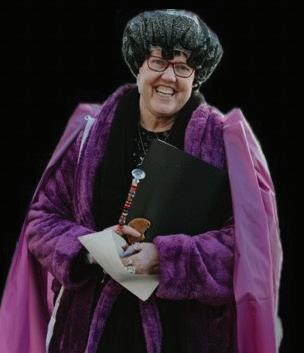
Out of the dark stillness
Light gathers, softening the sky. A new day dawns — Unknown potential and reborn hope.
I give thanks for the daily living of my life Moment by Moment
The gifts and the challenges, The sweet and the silly Transformed by Time’s passing Into Memory and History.
I offer myself to the world
As an instrument of Peace. I will let every day and every endeavor Be a prayer of thanks for life.
With Your Name on my lips, I begin
To read Evan’s suggestions for personalizing your prayer, visit annkeelerevans.org.





You have to climb Mt. Everest in Asia, Mt. Kilimanjaro in Africa, Mt. Elbrus in Europe; Aconcagua in South America, Mt. Vinson in Antarctica; Denali in North America, and Mt. Kosciusko in Australia to have your name added to the list of those who have ascended the Seven Summits.
Julie McKelvey of Lemoyne is one of only 500 people — and fewer than 100 women — who have completed the challenge.
McKelvey, who is now 55, was 48 when her father invited her to join him to climb Mt. Fuji in Japan. He enjoyed extreme sports and mountain climbing and told her, “I think I have one more mountain left in me. I want you to do it with me.”
When McKelvey and her dad climbed Mt. Fuji, she had a life-changing moment entering the world above the clouds and, even though she didn’t yet know it, she was beginning an
adventure few people have accomplished.
When she first traveled to Africa to climb Kilimanjaro, she had never heard of the Seven Summits: she learned of the challenge from her guide.
When she came home, after failing in her first attempt to climb Kilimanjaro, she found a reputable company that specializes in assisting people with the logistics, operations, and the training needed to climb the Seven Summits. She also worked with a physical training company to prepare for the challenge.
As an owner of 34 Miracle Ear locations and a member of the Miracle Ear Foundation Board of Directors, part of McElvoy’s motivation for accepting the challenge was to raise money for the Miracle Ear Foundation. Through her project, called Summit for Sound, she was able to raise more than

Julie McKelvey’s pack included essentials like highenergy snacks, drinks and powders, as well as her favorite staple – gummy bears – plus a few luxury items like a soft down pillow and a cozy sleeping bag.
The conditions are primitive at best, “You're not showering and you’re going to the bathroom in a Nalgene bottle in your tent,” she said. “Everything that goes up on the mountain has to come down, so they give you a green canister when you start at basecamp … it's locked down with straps … you carry it all the way up and you carry it all the way down.”
$250,000 to provide free hearing aids to children and adults who cannot afford them.
Over the course of the climbs, McKelvey has had significant injuries and illnesses. She broke her foot in training right before Denali, which she attempted, but she had to repeat the journey at another time.
She said she thought Everest would be her last climb, but she ended up doing Australia, which is the shortest and easiest climb last. “It’s just this little walk up a
hill and anybody can do it, but it’s the highest peak in Australia, so we decided — as a family — to climb on Dec.29,” McKelvey added.
“My father has been my No. 1 person. I did a video (for) him on the summit of Everest. My mother had died just a few months before I left,” she said, adding that her mother’s final wish was to have her ashes scattered on top of Everest.
“I had her [ashes] in my backpack with me the entire two months; she was with me the whole time.”
Each climb had its challenges, but Everest topped them all.
“On Everest, I was evacuated off the mountain with a lung infection and had to fly down the canyon to be hospitalized. I stayed out of altitude for a week and recovered and then ended up returning to the climb and summited on the very last day of the season,” she recalled.
Everest was also physically and mentally challenging, because she passed five dead bodies during the ascent.
“In almost every case,” she said, “they were people who went up with cheap companies that didn’t provide the proper support like enough oxygen or they allowed people to get off the rope.”
“I made sure on every mountain that I had the best guide,” McElvey said “and I knew they would tell me if I’m not strong
According to McKelvey, six of the seven peaks were difficult climbs for different reasons:
• Everest is the highest peak in Asia. It is the most difficult climb because the expedition is two months long — which is a very long time away and you live in a tent. It was extra difficult because I got so sick and had to be evacuated off the mountain, helicoptered to Kathmandu and hospitalized. I had to spend a week out of altitude recovering and I am so grateful it all worked out and I was able to summit on the very last day of the season.
Everest is also most difficult because of the altitude at over 29,000 ft. and having to use an oxygen system. And toward the top of Everest it is extremely exposed with only a two-foot walkway and on either side are drop-offs of thousands of feet.
Also 2023 was the deadliest season on Everest with 17 people dying. That was very hard to see up close.
• Denali is the highest peak in North America and it is a self-supporting climb — there are no porters to help you. Climbers carry approx. 60 pounds in backpack and another 80 in a sled attached to you that you drag all the way up. We have to carry all supplies, tents, food, stoves etc. so very, very heavy. And when you get to each camp you spend 2-3 hours setting up camp, melting snow for water, etc.
Denali was the most taxing physically by far and the reason the success rate is so low.
• Vinson is the highest peak in Antarctica. What makes this one so difficult is the extreme cold and wind — -40 F
— you camp in tents. Parts of the climb are steep, but this one is incredibly beautiful and there are so few footprints because not many people have stood there. It’s just incredible. It was also challenging because I fell and broke my mouth and teeth just days before, so I did the whole climb with my teeth wired together. Heavy packs and a sled are also needed, just not quite as much as on Denali.
• Aconcagua is the highest peak in South America and, it is the highest peak in the world outside the Himalayas. It’s 23,000 ft., but oxygen is not used here. This one is critical in the progression and you must ascend it to be approved for an Everest climb. The altitude on this one is the challenge. This was my least favorite climb. It’s just very brown.
• Elbrus (in Southern Russia) is the highest peak in Europe. It was my first time using crampons on my boots and being on a rope team. It was an excellent experience and I’m glad I got this when I did since no one can get over there now.
• Kilimanjaro is located in Tanzania in central Africa. It is challenging because of the altitude — over 19,000 feet. It is basically a trek that almost anyone can do. My first experience with real altitude and it was so much fun to do with a group of girlfriends!
• Kosciusko in Australia was not difficult at all. It is just a stroll up a paved patch — six hours total up and back from the car. Incredibly emotional and meaningful to finish this journey with my family by my side!
— Julie McKelvey
enough or fast enough or, if you’re sick, we turn you around.” With emphasis, he added, “And, you don’t ask any questions.”
McKelvey said much of the pre-climb training, which averaged 18-20 hours a week, was strength training and getting her body accustomed to the high altitude.
She added, “I did tons of box step-ups, holding 40-to-50pound dumbbells in each hand, over and over, getting my legs and back able to carry that kind of weight.”
Cardio is also very important, so in a gym — with her trainer — she worked on the incline trainer with a pack and did Stairmaster workouts. On the weekends, she trained at Hawk Mountain, near Duncannon. So, with a pack on her back, she’d go up and down Hawk Rock in the snow, rain, and heat until she’d get to the top and then she’d turn around and go back down, climb to the top, go back down — repeating the sequence for five to eight hours. McElvey said, “It was really brutal training.”
Another vital component of training was focused on recovery: stretching, getting enough sleep, proper nutrition, hydration and chiropractor visits.
When McElvey was about halfway through her training, her coach told her her body can only train to the extent it can recover from the training. That makes it necessary to put as much effort into recovering from the training so you can get up and do it again the next day, she said.
She took letters from her son, now 14, with her on each climb. She saved them to open when she reached base camp and set up her tent. Encouraging messages, photos, and drawings “kept her going to the next camp,” McElvey said with a smile.
She also took a special necklace that had meaningful charms on it that she carried 24/7.
McKelvey cautions everyone not to wait if there is something you really want to accomplish. It’s easy to say, “I’ll wait ‘til my kids are older. I’ll wait ‘til this — or that — is done.” Instead, she encourages someone to say, “I’m going to commit to this. I have no idea what it’s gonna look like and how hard it’s going to be, but I’m going to commit to it’.
“I don’t want to look back and regret anything.”
As a business owner, being away for weeks or months at a time changed McKelvey’s approach to running her Miracle Ear franchises.
“You have to delegate, she said. “I’ve got the right team in place and I can trust them to keep everything moving as if I was there.”
Above all, McKelvey said, “Live in the present!”

































Mother's Day is an opportunity for each of us to show our moms, grandmas, wives and special women in our lives how much they're loved and appreciated.
Your mom, like many others, will insist the only thing she would like is to spend the day with her children. While breakfast in bed — yummy soggy cereal and soggier toast — is always a popular option, brunch at a favorite restaurant is a special treat for mom — and her family.
No two moms are the same, and while gifts like flowers, candy and greeting cards are always lovely presents, here are a few gift ideas that might put a smile on mom's face.

Shopping for mothers who love to read is easy. A newly released book or one by her favorite author is always
welcome. A backrest reading pillow can make bedtime reading more comfortable or a nightstand book holder is great for moms who can't ever find their bookmarks.
Some moms simply love to get in a good workout, so a new yoga mat, some wireless Bluetooth headphones or a compression stretching mat are gifts that will make her smile on Mother's Day.
Here are a few more time-honored suggestions: a framed photo of a recent family event, a gift card for a manicure or — better yet — a mani and a pedi, or tickets to a movie. You know which movies she’ll like. You get the idea — choose something she will enjoy.


There is one rule for Mother's Day: any gift that is given by a child who made it or bought it with a heart filled with love is a gift to treasure for a mother who’s treasured.







Story and photos by MetroCreative Library
March marks the official arrival of spring, but the warm weather synonymous with spring typically does not arrive until April or May.
St. Patrick’s Day celebrants who spend the day outdoors celebrating their Irish heritage would do well to warm up with a hearty meal once the revelry ends. Irish stew is tailormade for such feasts, as it aligns with the theme of the day and also serves as a warm and filling meal.
Slow cookers make whipping up a batch of Irish stew somewhat effortless. Simply combine the ingredients in the morning, then return at night to a completely cooked meal you can enjoy with family and friends. Any favorite stew recipe can be adapted to the slow cooker. For inspiration, try this variation.
HEARTY SLOW COOKER IRISH STEW FOR ST. PATRICK’S DAY ( SERVES 4 - 6 )
2 pounds boneless leg of lamb, trimmed and cut into 1-inch pieces (or chuck beef roast if you prefer it to lamb)
6 large potatoes, peeled and cut into chunks
3 to 4 parsnips, peeled and cut into chunks
2 large carrots peeled and cut into chunks, or half a bag of prepared baby carrots
2 celery stalks, chopped
1 large yellow onion, coarsely chopped
1 can beef broth
2 tablespoons tomato paste
1 pint Irish stout beer
1⁄4 cup vegetable oil
1 tablespoon flour
Chopped fresh herbs, such as parsley and thyme.
Salt and pepper to taste.
In a mixing bowl, coat meat with the flour. Heat vegetable oil in a large skillet and cook the onion until translucent. Add the meat and brown.
Place the potatoes, parsnips, carrots, and celery in the bottom of a slow cooker crock. Add the cooked meat and onions. Pour in the beef broth and beer.
Add the tomato paste, fresh herbs and salt and pepper.
Cover and cook on “high” for 4 hours or “low” for 8 hours. When ready to serve, sprinkle with fresh parsley and offer with crusty bread and salad.
Charoset is part of the traditional Passover seder plate. Passover is steeped in tradition, involves symbolic foods which tell the story of the Israelites and their miraculous exodus from Egyptian slavery.
One such food is charoset (also spelled haroset), which symbolizes the mortar the Israelites used to build bricks when they were slaves in Egypt. Charoset is a fruit relish used on crackers or matzoh and bitter herbs. The bittersweet taste is supposed to teach the bitterness of bondage and the sweetness of freedom.
Passover celebrants can make their own charoset by following this recipe, courtesy of Israel My Glory magazine.
1 large apple, any variety
1/2 cup chopped nuts
2 tablespoons honey
1 teaspoon cinnamon
Small amount of lemon juice (optional)
Put the apples and nuts into a food processor and pulse
So many sweets are on display at Easter that it can be difficult to select a dessert everyone will enjoy. Carrot cake boasts an antioxidant-rich main ingredient and offers some semblance of nutrition amid the sugar rush of other offerings.
This recipe for “Carrot Cake” from “Throw a Great Party: Inspired by Evenings in Paris with Jim Haynes” (iUniverse) by Mary Bartlett, Antonia Hoogewerf and Catherine Monnet yields two cakes, perfect for feeding a crowd.
DESSERT ( SERVES 25 )
4 cups sugar
8 eggs
2 cups oil, canola or safflower
2 1⁄2 teaspoons vanilla
4 cups flour
4 teaspoons baking powder
2 teaspoons salt
2 teaspoons cinnamon
2 pounds carrots, grated
2 cups nuts, chopped
2 1⁄2 cups raisins (optional)
Beat the sugar and eggs together until well blended. Stir in the oil and vanilla. In a separate bowl, mix the flour, baking soda, salt, and cinnamon. Combine the egg mixture. Fold in carrots, nuts and raisins.
Divide the batter between two 9 X 13-inch or 4 8X8 inch round greased baking pans. Refrigerate the batter between baking times. Bake the cakes in a moderately hot oven (350 F) for approximately 40 minutes. Let cool completely.
Frost with cream cheese frosting. The cakes may be left in the pans for ease of serving.

until finely diced. Sprinkle enough lemon juice on the mixture to keep the apples from turning brown. Then mix in the other ingredients. Some people also mix in a little grape juice or wine. The recipe is very forgiving, so the measurements do not have to be exact.

8 ounces cream cheese
5 ounces butter
1 1⁄2 pounds powdered sugar
1 1⁄2 teaspoons vanilla
Bring the cream cheese and butter to room temperature. Cream the two together until smooth. Add sugar gradually, shaking it through a strainer to get rid of the lumps and beat until smooth. Add the vanilla. Cover and refrigerate until it has a good spreading consistency.

1. Recapture the past
12. Military greeting
13. Passenger ships
15. Can't move
16. Any omission of part
18. 43rd state
19. Compassionate nursing care
20. Pa's partner
21. Dutch cheese
24. London radio station
27. Perfumed powder bag
30. Liquid body substances
31. Expresses pleasure
33. Escape from prison
34. Long-wave hue
35. Bleated
37. Male swan
39. Head cover
41. Fewer calories
42. Teal duck genus
44. Inspire with love
47. Grab
48. Cruel inhuman person
49. 6th musical tone
52. Megabyte
53. Headpin in bowling
56. Light, fitful naps
61. Precede
62. Greek and Turkish Sea
63. Pot 'o gold location
65. Was in disagreement DOWN
1. A player's part
2. Ratites
3. Distribute
4. 15th day of March
5. Empire State


10. "Tosh.0" and "South Park" are two
50. Indigenous tribe of Indonesia
6. Small island
7. Con or swindle accomplices
8. Oasts kiln shape
9. Female sheep
10. Motor vehicle
11. ___ Lanka
12. More melancholy
14. Not all
15. Apple, pumpkin or la mode
17. __ King Cole, musician
22. Palms with egg shaped nuts
23. Mistress of household
24. Founder of Babism
25. Semitic fertility god
26. Connected links
28. Chocolate tree
29. Miao-Yao is their language
32. Moss capsule stalk
36. Young society woman
38. Bartenders
40. Buried port city
43. One point S of SE
44. Cervid
45. Inexperienced (var.)
46. Exercises authority over
51. Handles
54. Neither
55. Alumnus
56. Sunrise
57. Cease exertion
58. Double curve
59. Maneuver
60. Not happy
64. Old English
— See puzzle answers on Page 12.











Thursdays through March 28 2024

DISCO DANCE BREAK, AT THE LEWISBURG CHILDREN'S MUSEUM, 815 MARKET ST., LEWISBURG
Every Thursday at 10 a.m. (Museum is open until 4 p.m.)
Dance your wiggles out!
Program is included with general admission or membership.


For additional information: lewisburgchildrensmuseum@ gmail.com
Each week until May 12, 2024
KRESS COLLECTION EXHIBIT, SAMEK ART MUSEUM IN THE ELAINE LANGONE CENTER, 701 MOORE AVE. LEWISBURG ON THE CAMPUS OF BUCKNELL UNIVERSITY.
Wednesday – Friday: Noon – 5 p.m.
Saturday & Sunday: 10 a.m. – 5 p.m.
The Samek Art Museum will display 23 Renaissance and Medieval artworks the museum received from the Kress
Foundation in 1961. Samuel H. Kress knew many Americans would never have the chance to see paintings like the ones he had collected. The Samek is the only museum in the area to host this number of Renaissance artworks.
The public is invited and there is no fee to view the exhibit.
For more information: 570-577 3792 or at https://museum. bucknell.edu.


April 6, 2024
DISCOVER SELINSGROVE A CHOCOLATE STROLL
Selinsgrove Chamber of Commerce, 10 a.m. until 2 p.m.
Enjoy lusciously decadent chocolate treats while you shop and discover Selinsgrove's family of businesses! Along the way, you'll vote for your favorite chocolate offerings as businesses compete to win the coveted chocolate trophy!
At the end of your chocolate journey, turn in your chocolate passport to be entered into a drawing for some wonderful prizes.
For more information: SelinsgroveChamberOfCommerce@ gmail.com and 570-374-8992



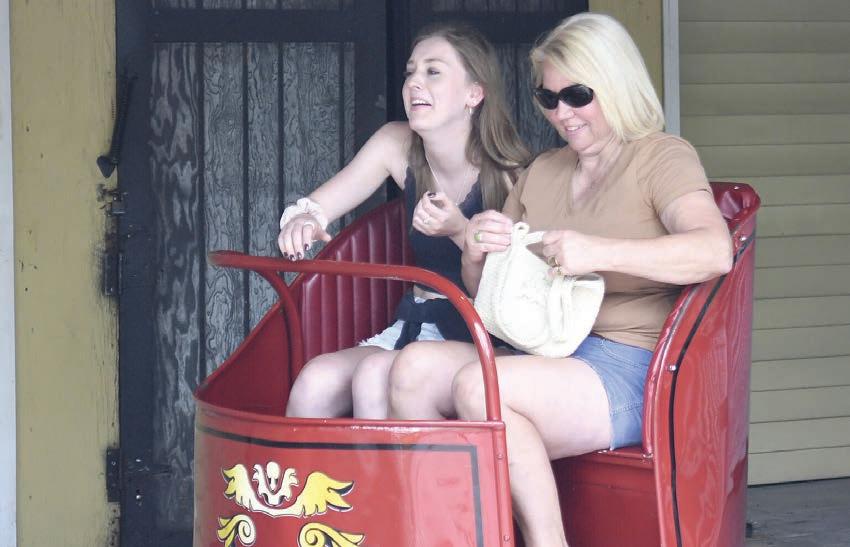
April 20, 2024
BIRDS OF PREY DAY — OWLS, HAWKS, AND FALCONS, OH MY!
Clyde Peeling's Reptiland, 18628 U.S. 15, Allenwood
Open 10 a.m. - 5 p.m.
Presentations by Falconers, including a Harris's Hawk, Lanner Falcon, Red-tailed Hawk, Gyrfalcon, Peregrin Falcon and a Great Horned Owl.
Admission to the general exhibits at Reptiland is included in the fee.
Fee: Zoo members are admitted free
Ages 12 through Adult — $20
Ages 3 through 11 — $16
Ages 2 and under — free
For additional information: https://reptiland.com/ and 570538-1869.
April 27 and 28, 2024
Knoebels Amusement Resort, 391 Knoebels Blvd., Route 487, Elysburg
"Knoebels is the hotspot for affordable family fun, featuring over 60 rides and attractions for people of all ages to enjoy!"
Hours and ticket prices at Knoebels.com





RelaxinMontgomery’s onlyrooftoppoolandspa.EscapetotheeleganceofMobile’s historicBattleHouseHotel.ComeexperienceAlabama’s tophotels,resorts,andcoursesalongtheRobert TrentJonesGolf Trail.Stayineightluxuryhotelsandplay26world-classcoursesfromthe TennesseeRivertoMobileBay.Laugh,play,explore,andrelaxinpicturesquesettings.Pamperyourselfinluxuryspas. Teeoffwithfamily andfriends. Walktoareaattractions.Enjoyfarm-to-tablecuisine.It’s timetoplanyournexttriptotheRobert TrentJonesGolf Trail.
To learnmore, visi t rtjgol f.comor call 800.9 49.4 444 We will behere awai ting your arri val.
